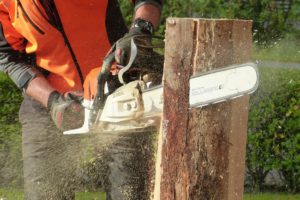Occupational Risks and Acute Myocardial Infarction
Background
 Acute myocardial infarction (AMI) is the medical term for a heart attack and occurs when blood flow to the heart decreases or stops, usually caused by blockages in the arteries [1]. In 2015, there were 240,060 cases of AMI in adults aged 20 years or older in Ontario [2,3]. Adults with a history of AMI are four times more likely to die of any cause compared to those without, demonstrating the importance of continued efforts to understand and prevent AMI [4]. AMI risk is most often attributed to behavioural factors including smoking, poor diet, alcohol consumption, and physical inactivity [5]. However, there is growing evidence for occupational risk factors related to increased risk of AMI.
Acute myocardial infarction (AMI) is the medical term for a heart attack and occurs when blood flow to the heart decreases or stops, usually caused by blockages in the arteries [1]. In 2015, there were 240,060 cases of AMI in adults aged 20 years or older in Ontario [2,3]. Adults with a history of AMI are four times more likely to die of any cause compared to those without, demonstrating the importance of continued efforts to understand and prevent AMI [4]. AMI risk is most often attributed to behavioural factors including smoking, poor diet, alcohol consumption, and physical inactivity [5]. However, there is growing evidence for occupational risk factors related to increased risk of AMI.
Possible occupational risk factors for AMI include noise, vibrations, temperature extremes, secondhand smoke, chemical and particulate hazards, shift work, psychosocial stress, and occupational physical activity [6-14]. Exposure to noise increases blood pressure, an established risk factor for AMI, though an association with AMI is less well established [7,12]. Exposure to vibration has been shown to influence changes in heart-rate variability and peripheral vascular contraction, both risk factors for AMI [15]. Temperature extremes like heat and cold and specific toxins like carbon monoxide from diesel engine exhaust and environmental tobacco smoke may also increase the risk of heart disease [9]. Exposure to particulate air pollution, including silica dust, fumes, and combustion particles have been shown to be associated to increased risk of AMI [8].
Other factors like shift work may also increase risk of heart disease, however, findings have been inconsistent [11]. There is also some evidence that psychosocial exposures can lead to job strain causing psychological stress, possibly affecting heart health. Job-related stress is related to socioeconomic status, which is a strong predictor of AMI [14,16]. There is increasing evidence suggesting that blue-collar workers are at increased risk for AMI compared to white-collar workers [6,14,17]. Although blue collar workers may experience more occupational physical activity, which is often recognized as a preventable factor for heart disease, these workers are likely to experience heavy lifting and manual labour which may increase the risk for heart disease [9].
Occupational Disease Risks
The following results show the percent increase in risk among groups of workers by industry or occupation compared to all other workers followed in the ODSS. In the ODSS worker cohort, AMI risk was generally higher among blue-collar workers compared to white-collar workers, similar to previous studies [14].
Wood-related work
 A consistent excess risk of AMI was observed for workers in wood-related industries and occupations in the ODSS. Use of tools and machinery, such as industrial woodworking equipment and chainsaws in forestry and logging, may lead to exposure to excessive noise and vibration [12,15]. Other occupational exposures that may increase AMI risk for wood-related workers include psychosocial stress (from job strain or stressful work conditions) [18] and shiftwork [19-20] and among pulp and paper mill workers, exposure to sulfur compounds and bleachery chemicals [20-22].
A consistent excess risk of AMI was observed for workers in wood-related industries and occupations in the ODSS. Use of tools and machinery, such as industrial woodworking equipment and chainsaws in forestry and logging, may lead to exposure to excessive noise and vibration [12,15]. Other occupational exposures that may increase AMI risk for wood-related workers include psychosocial stress (from job strain or stressful work conditions) [18] and shiftwork [19-20] and among pulp and paper mill workers, exposure to sulfur compounds and bleachery chemicals [20-22].
| Industry or Occupation | Increased risk |
| Wood manufacturing industries | 27%* |
| Wooden box factories | 57%* |
| Veneer and plywood mills | 40%* |
| Sawmills, planning mills, and shingle mills | 32%* |
| Sash, door and other millwork plants | 26%* |
| Forestry and logging occupations | 33%* |
| Log hoisting, sorting, moving and related | 74%* |
| Timber cutting and related | 27%* |
| Wood processing (except paper pulp) occupations | 50%* |
| Labouring and other elemental work | 71%* |
| Pulp and papermaking occupations | 31%* |
| *Statistically significant (α=0.05) | |
Mining and quarrying
Increased risks of AMI were observed for specific mining industries in the ODSS. Exposure to noise and vibration through drilling, blasting, crushing or other operations in mining and quarrying workers can increase the risk of AMI [15]. Miners are also exposed to diesel engine exhaust and particulates such as respirable quartz, which have been associated with increased risks of AMI [8, 23-26].
| Industry | Increased risk |
| Sand pits or quarrying | 61%* |
| Gold quartz mining | 52%* |
| Uranium mining | 37%* |
| *Statistically significant (α=0.05) | |
Textile manufacturing and processing
 Increased risks of AMI were observed in textile manufacturing workers which has been previously observed [27]. Workers may be exposed to a variety of organic dusts and airborne particulate from fibrous material that is often contaminated with bacterial endotoxins [28]. Inhalation of dust and endotoxins may contribute to increased risk of AMI [8, 29]. The highest risk of AMI in this group was for textile fibre preparing, finishing and calendaring.
Increased risks of AMI were observed in textile manufacturing workers which has been previously observed [27]. Workers may be exposed to a variety of organic dusts and airborne particulate from fibrous material that is often contaminated with bacterial endotoxins [28]. Inhalation of dust and endotoxins may contribute to increased risk of AMI [8, 29]. The highest risk of AMI in this group was for textile fibre preparing, finishing and calendaring.
| Industry or Occupation | Increased risk |
| Leather industries | 48%* |
| Textile processing occupations | 26%* |
| Textile fibre preparing | 165%* |
| Textile finishing and calendaring | 124%* |
| *Statistically significant (α=0.05) | |
Excavating and grading
Construction work is physically demanding and workers in this sector are regularly exposed to loud noise, vibrations, and stressors [24, 30]. An excess risk of AMI was observed in excavating, grading and related work labourers. Workers may also be exposed to diesel engine exhaust, crystalline silica dust, and polycyclic aromatic hydrocarbons which have been linked to increased cardiovascular disease risks [24, 31-33].
| Occupation | Increased risk |
| Labouring and other elemental work: Excavating, grading and related | 38%* |
| *Statistically significant (α=0.05) | |
Truck transport
 Increased risk of AMI was observed among truck transport workers, with the highest risk observed among female drivers [14]. An excess among female truck drivers has not been reported before but previous studies have often been limited due to small numbers of female workers [34]. Some studies have shown a higher risk for heart disease in females exposed to airborne particulate matter, compared to males [8]. Truck transport workers are also exposed to high levels of noise and carbon monoxide through diesel engine exhaust, both which have been associated to adverse cardiac effects [12,24,33,35]. Psychosocial stressors including shift work and long working hours may also play a role in AMI risk as long-haul drivers and long-distance drivers have shown an increased risk for AMI in previous studies [19,27,36].
Increased risk of AMI was observed among truck transport workers, with the highest risk observed among female drivers [14]. An excess among female truck drivers has not been reported before but previous studies have often been limited due to small numbers of female workers [34]. Some studies have shown a higher risk for heart disease in females exposed to airborne particulate matter, compared to males [8]. Truck transport workers are also exposed to high levels of noise and carbon monoxide through diesel engine exhaust, both which have been associated to adverse cardiac effects [12,24,33,35]. Psychosocial stressors including shift work and long working hours may also play a role in AMI risk as long-haul drivers and long-distance drivers have shown an increased risk for AMI in previous studies [19,27,36].
| Occupation | Increased risk |
| Female truck drivers | 68%* |
| Male truck drivers | 32%* |
| *Statistically significant (α=0.05) | |
Risk Recognition
Focusing on heart health earlier in life can help to manage risk factors and prevent early heart disease. Behavioural factors such as a healthy diet and weight, engaging in physical activity, stress management, and not smoking are all important for reducing risk of heart disease [37]. However, it is important to understand that occupational factors may also contribute to risk of heart disease [38].
With increasing evidence of occupational risks for AMI, efforts should be made to improve understanding of occupational exposures and specific groups identified in the ODSS. This can lead to better risk reduction strategies for heart disease while also improving workplace health and safety.
References
- University of Ottawa Heart Institute. Heart attack Ottawa: University of Ottawa Heart Institute.
- Public Health Ontario & Cancer Care Ontario. (2019). The burden of chronic diseases in Ontario.
- Government of Canada. Canadian Chronic Disease Surveillance System (CCDSS)- Acute Myocardial Infarction. [cited 2021 Apr 7].
- Public Health Agency of Canada (PHAC). Report from the Canadian Chronic Disease Surveillance System: Heart Disease in Canada, Ottawa, Ontario; 2018.
- Heart & Stroke. 2020. Heart attack also called myocardial infarction.
- Nowrouzi-Kia B, Li AKC, Nguyen C, Casole J. Heart Disease and Occupational Risk Factors in the Canadian Population: An Exploratory Study Using the Canadian Community Health Survey. Saf Health Work, 2018; 9(2):144–8.
- van Kempen EEMM, Kruize H, Boshuizen HC, Ameling CB, Statsen BAM, de Hollander AEM. The association between noise exposure and blood pressure and ischemic heart disease: A meta-analysis. Environ Health Perspect, 2002; 110(3):307–17.
- Wiebert P, Lonn M, Fremling K, Feychting M, Sjogren B, Nise G, Kauppinen T, Plato N & Gustavsson P. Occupational exposure to particles and incidence of acute myocardial infarction and other ischaemic heart disease. Occ & Env Med, 2012, 69(9): 651-7.
- Steenland K. Epidemiology of occupation and coronary heart disease: Research agenda. Am J Ind Med, 1996, 30(4):495-9.
- Hlatky MA, Lam LC, Lee KL, Clapp-Channing NE, Williams RB, Pryor DB, et al. Job strain and the prevalence and outcome of coronary artery disease. Circulation, 1995, 92(3):327–33.
- Wang A, Arah OA, Kauhanen J & Krause N. Shift work and 20-year incidence of acute myocardial infarction: results from the Kuopio Ischemic Heart Disease Risk Factor Study. Occupational & Environmental Medicine, 2016, 73(9): 588-594.
- Davies HW, Teschke K, Kennedy SM, Hodgson MR, Hertzman C, Demers PA. Occupational exposure to noise and mortality from acute myocardial infarction. Epidemiology, 2005, 16(1):25–32.
- Krause N. Physical activity and cardiovascular mortality – Disentangling the roles of work, fitness, and leisure. Scand J Work Environ Health, 2010, 36(5):349-55.
- Troke N, Logar‐Henderson C, DeBono N, Dakouo M, Hussain S, MacLeod JS, Demers PA. Incidence of acute myocardial infarction in the workforce: Findings from the Occupational Disease Surveillance System. Am J of Ind Med, 2021, 64(5):338-357, doi: 10.1002/ajim.23241.
- Björ B, Burström L, Nilsson T, Reuterwall C. Vibration exposure and myocardial infarction incidence: the VHEEP case–control study. Occup Med (Chic Ill).
- Dragano N, Siegrist J, Nyberg ST, et al. Effort–reward imbalance at work and incident coronary heart disease: a multicohort study of 90,164 individuals. Epidemiology, 2017, 28(4):619-26.
- Moller J. Work related stressful life events and the risk of myocardial infarction. Case–control and case‐crossover analyses within the Stockholm heart epidemiology programme (SHEEP). J Epidemiol Community Heal, 2005, 59(1):23-30.
- Hammar N, Alfredsson L, Smedberg M, Ahlbom A. Differences in the incidence of myocardial infarction among occupational groups. Scand J Work Environ Heal, 1992, 18:178-85.
- Rivera AS, Akanbi M, O’Dwyer LC, McHugh M. Shift work and long work hours and their association with chronic health conditions: a systematic review of systematic reviews with meta‐analyses. PLOSOne, 2020,15(4):e0231037.
- Karlsson B, Alfredsson L, Knutsson A, Andersson E, Torén K. Total mortality and cause‐specific mortality of Swedish shift‐ and dayworkers in the pulp and paper industry in 1952–2001. Scand J Work Environ Heal, 2005;31(1):30‐35.
- Andersson E, Persson B, Bryngelsson IL, et al. Cohort mortality study of Swedish pulp and paper mill workers—nonmalignant diseases. Scand J Work Environ Heal, 2007, 33(6):470‐8
- Torén K, Hagberg S, Westberg H. Health effects of working in pulp and paper mills: exposure, obstructive airways diseases, hypersensitivity reactions, and cardiovascular diseases. Am J Ind Med, 1996, 29:111‐22
- Cosselman KE, Allen J, Jansen KL, Stapleton P, Trenga CA, Larson T V., et al. Acute exposure to traffic-related air pollution alters antioxidant status in healthy adults. Environ Res, Environ Res, 2020,191:110027.
- Fang SC, Cassidy A, Christiani DC. A systematic review of occupational exposure to particulate matter and cardiovascular disease. Int J Environ Res Public Health, 2010, 7(4):1773‐1806
- Tellez‐Plaza M, Jones MR, Dominguez‐Lucas A, Guallar E, Navas‐Acien A. Cadmium exposure and clinical cardiovascular disease: a systematic review. Curr Atheroscler Rep, 2013, 15:356.
- Gellissen J, Pattloch D & Mohner M. Effects of occupational exposure to respirable quartz on acute myocardial infarction. Occupational and Environmental Medicine, 2019, 76(6): 370-375.
- Robinson CF, Walker JT, Sweeney MH, Shen R, Calvert GM, Schumacher PK, Ju J & Nowlin S. Overview of the national occupational morality surveillance (NOMS) system: leukemia and acute myocardial infarction risk by industry and occupation in 30 US States 1985-1999, 2003-2004, and 2007. Am J Ind Med, 2015, 58(2):123-137.
- Paudyal P, Semple D, Niven R, Tavernier G, Ayres JG. Exposure to dust and endotoxin in textile processing workers. Ann Work Expo Health, 2010, 55(4): 403-409.
- Stoll LL, Denning GM, Weintraub NL.Potential role of endotoxin as a proinflammatory mediator of atherosclerosis. Arterioscler Thromb Vasc Biol, 2004, 24(12):2227–36.
- Ministry of Labour, Training and Skills Development. (2020). Excavation hazards.
- Alhamdow A, Lindh C, Albin M, Gustavsson P, Tinnerberg H & Broberg K. Early markers of cardiovascular disease are associated with occupational exposure to polycyclic aromatic hydrocarbons. Scientific Reports, 2017, 7, 9426.
- Lee MS, Magari S & Christiani DC. Cardiac autonomic dysfunction from occupational exposure to polycyclic aromatic hydrocarbons. Occ Env Med, 2011, 68(7): 474-8.
- Bigert C, Gustavsson P, Hallqvist J, et al. Myocardial infarction among professional drivers. Epidemiology, 2003, 14(3):333‐9
- Bigert C, Klerdal K, Hammar N, Hallqvist J & Gustavsson P. Time trends in the incidence of myocardial infraction among professional drivers in Stockholm 1977-96. Occ Env Med, 2004, 61: 987-991.
- Laden F, Hart JE, Smith TJ, Davis ME, Garshick E. Cause‐specific mortality in the unionized U.S. trucking industry. Environ Health Perspect, 2007;115(8):1192-96
- Gustavsson P, Alfredsson L, Brunnberg H, Hammar N, Jakobsson R, Reuterwall C & Ostlin P. Myocardial infarction among male bus, taxi, and lorry drivers in middle Sweden. Occ Env Med, 1996, 53(4): 235-40.
- Government of Canada. (2017). Heart disease in Canada: highlights from the Canadian chronic disease surveillance system.
- American Heart Association. (2021). Understand your risks to prevent a heart attack.
Surveillance Bulletins
The Occupational Disease Surveillance System (ODSS) Surveillance Bulletins provide summaries of occupational exposures and disease risks across different industries and occupational groups. The aim of these bulletins is to report on high risk occupations and industries and specific exposures detected through occupational disease surveillance. At this time the ODSS includes workers from 1983-2014 and follows their health outcomes until 2016. This bulletin reflects only the diseases currently tracked within the ODSS. The system is updated and expanded on an ongoing basis.
More information about the ODSS including data sources, methods and detailed results can be found at ODSP-OCRC.ca and OccDiseaseStats.ca.
